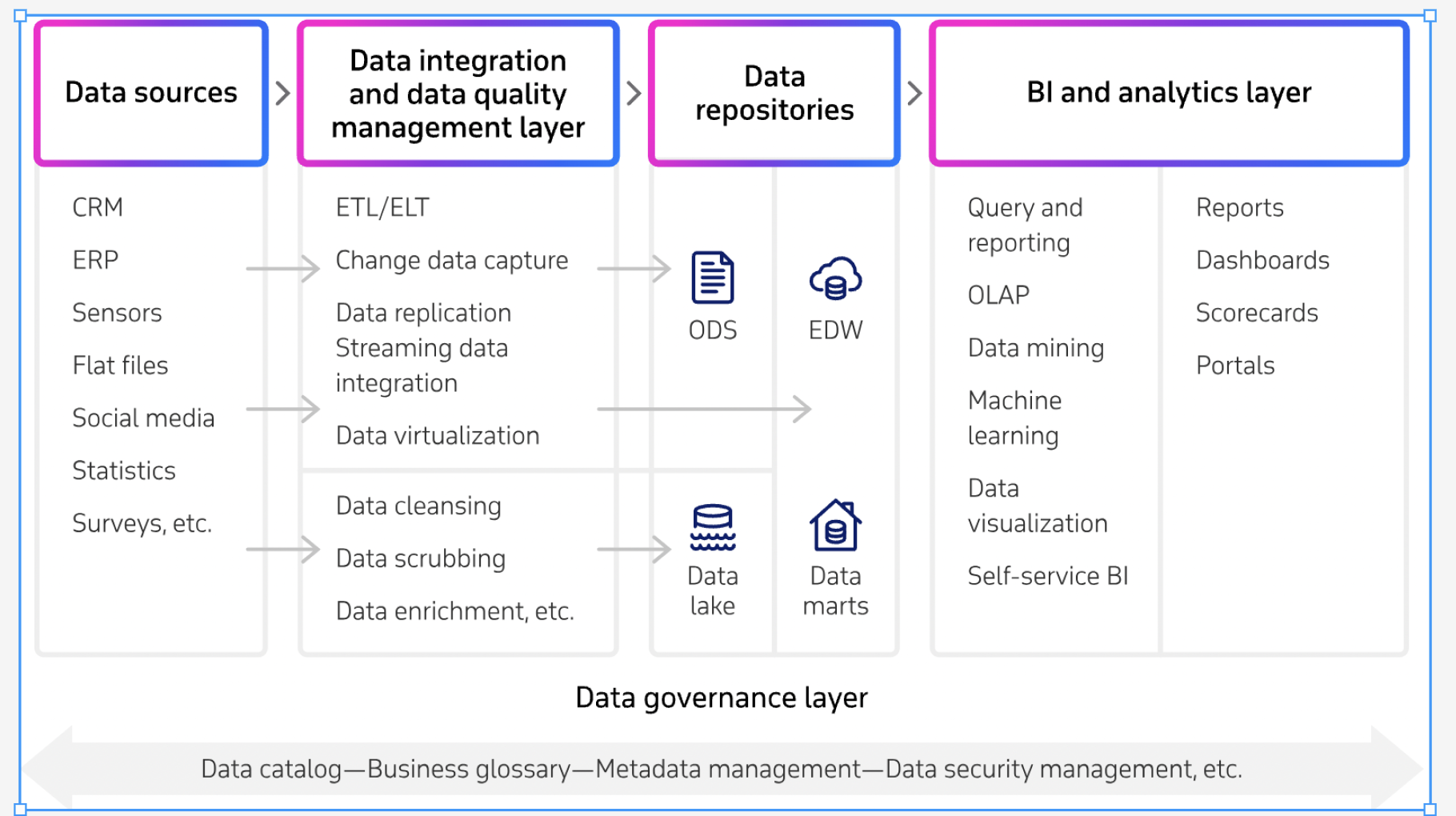Understanding the distinction between a business data analyst and a business analyst is crucial for navigating today’s competitive job market. While a business data analyst focuses on extracting actionable insights from data, a business analyst works to enhance processes and deliver business solutions. These roles are vital as organizations increasingly rely on analytics and process optimization to thrive. For instance, the Bureau of Labor Statistics projects rapid growth in data-focused roles, driven by advancements in machine learning and the urgent need for analytics expertise. This trend underscores the importance of aligning your career path with these evolving opportunities.

Key Takeaways on Business Data Analyst
- Business data analysts focus on data analysis, using tools like SQL to drive decisions, while business analysts optimize processes through problem-solving and communication.
- Both roles are in high demand, fueled by the growing reliance on data and analytics across industries.
- Choose based on your passion: data for business data analysts, process improvement for business analysts.
Who is a Business Data Analyst?
Definition and Overview
A business data analyst plays a pivotal role in modern organizations by bridging the gap between raw data and actionable insights. You focus on collecting, analyzing, and interpreting data to help businesses make informed decisions. Your work involves transforming complex datasets into meaningful information that drives strategic initiatives and improves operational efficiency. In today’s data-driven world, your role as a business data analyst is indispensable for identifying opportunities, mitigating risks, and enhancing customer experiences.
Organizations rely on you to align data analysis with their goals. By leveraging advanced tools and techniques, you empower teams to optimize performance and achieve growth. Your ability to interpret data and present it in a clear, visual format ensures that stakeholders can act on insights effectively. As a business data analyst, you are not just a number cruncher; you are a key contributor to an organization’s success.

Key Responsibilities
Your responsibilities as a business data analyst revolve around extracting value from data. Here’s what you typically do:
- Collect and Analyze Data: You gather information from various sources and analyze it to uncover patterns and trends.
- Manage Databases: You ensure data integrity by creating and maintaining databases that store critical information.
- Generate Reports: You produce detailed reports that highlight key findings and support decision-making.
- Collaborate with Stakeholders: You work closely with teams to align data analysis with business objectives.
- Visualize Data: You create dashboards and visual narratives to simplify complex insights.
- Predictive Modeling: You use statistical techniques to forecast future trends and behaviors.
- Monitor Impact: You evaluate the outcomes of decisions and refine your models for better results.
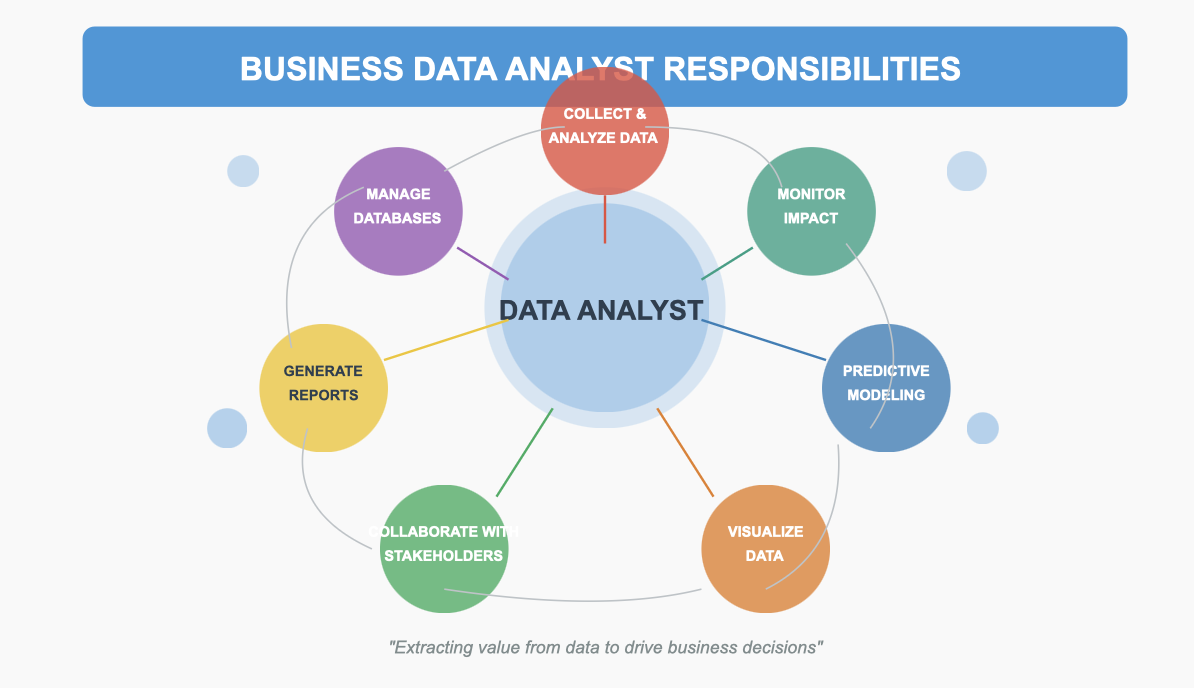
These tasks make you an essential part of any organization aiming to thrive in a competitive market. Your ability to transform raw data into actionable insights ensures that businesses can adapt and grow.
Required Skills and Qualifications
To excel as a business data analyst, you need a combination of technical expertise and analytical thinking. Here are the key skills and qualifications you should possess:
- Technical Proficiency: You must be skilled in SQL for data retrieval and manipulation. Familiarity with programming languages like Python or R is also essential.
- Data Analysis Tools: Knowledge of tools like Tableau, Power BI, or FineBI helps you visualize data effectively.
- Statistical Knowledge: Understanding statistical methods enables you to interpret data accurately and build predictive models.
- Problem-Solving Skills: You should have the ability to identify issues and propose data-driven solutions.
- Communication Skills: Presenting your findings clearly to stakeholders is crucial for driving decisions.
- Education: A degree in fields like data science, statistics, or business analytics provides a strong foundation for this role.
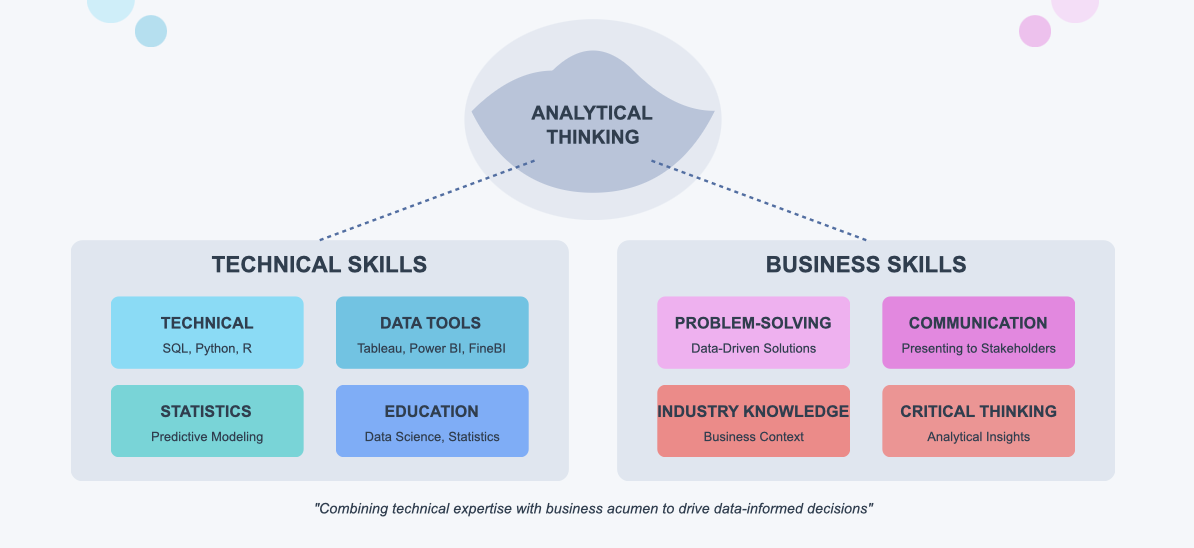
Your role as a business data analyst requires continuous learning. Staying updated with the latest data analysis tools and techniques ensures that you remain a valuable asset to your organization.
Common Tools Used, including FineDataLink and FineBI
As a business data analyst, you rely on various tools to analyze, manage, and visualize data effectively. These tools help you uncover insights, streamline workflows, and present findings in a way that drives decision-making. Among the most popular tools are FineDataLink and FineBI, which offer robust features tailored to meet your needs.
You can refer to the logic diagram below for a clearer understanding of our product features!
FineDataLink: A Data Integration Powerhouse
FineDataLink simplifies the process of integrating and managing data from multiple sources. It allows you to synchronize data in real time, ensuring accuracy and consistency. With its low-code platform, you can perform advanced ETL (Extract, Transform, Load) tasks without extensive coding knowledge. This makes it easier to build data pipelines and prepare datasets for analysis.
One of FineDataLink’s standout features is its ability to handle complex data formats. Whether you’re working with databases, APIs, or cloud-based systems, this tool ensures seamless connectivity. Its drag-and-drop interface enhances usability, enabling you to focus on analysis rather than technical challenges. By using FineDataLink, you can create a high-quality data foundation for your business intelligence projects.
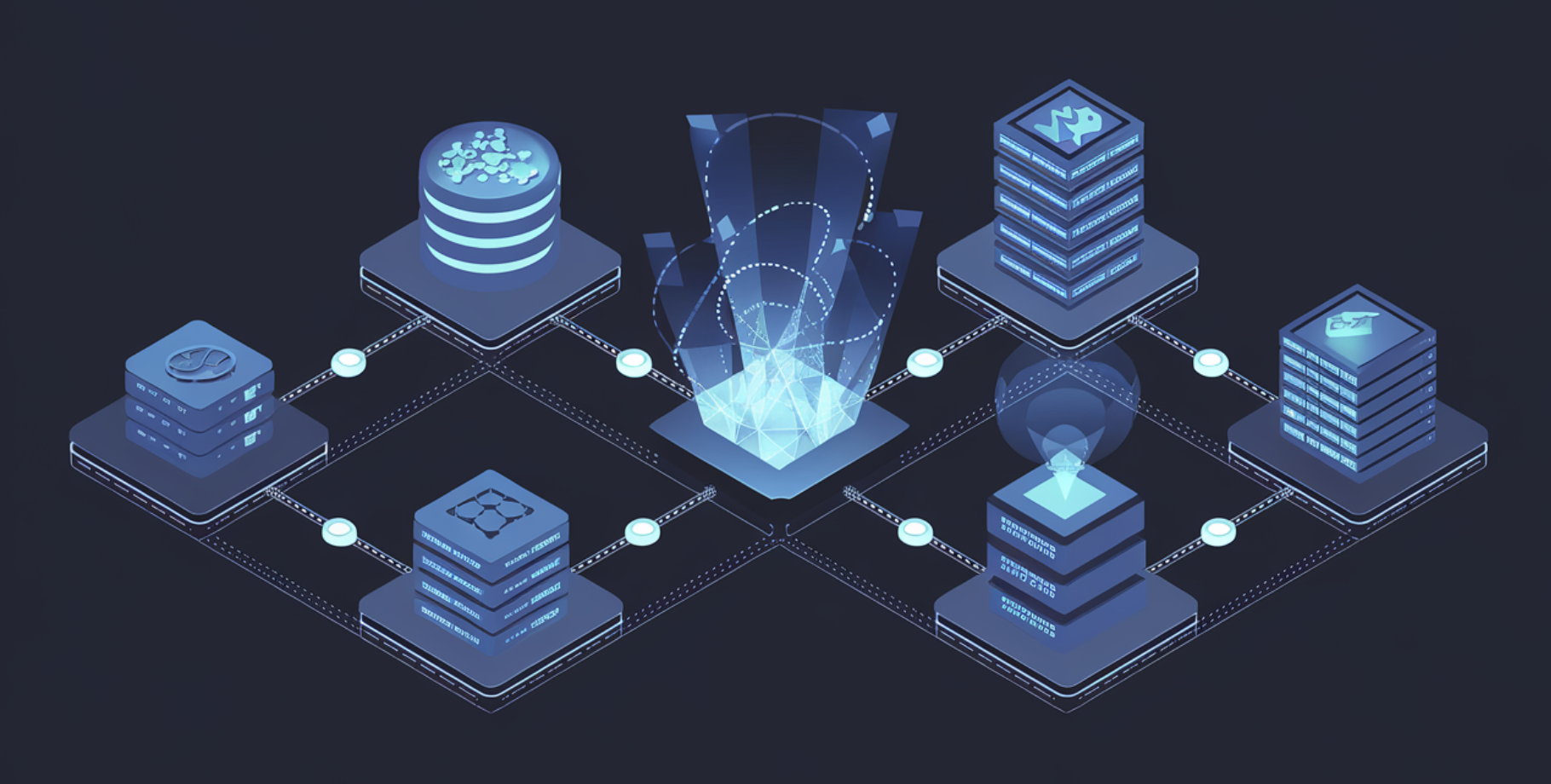
FineBI: Empowering Data Visualization and Analysis
FineBI is a self-service business intelligence tool designed to make data visualization accessible to everyone. Its intuitive interface allows you to create dashboards and charts with ease. You can connect to various data sources, perform exploratory analysis, and generate insights independently. This tool empowers you to transform raw data into actionable visualizations that stakeholders can understand.
FineBI supports over 60 chart types, including advanced options like Sankey diagrams and Gantt charts. Its OLAP (Online Analytical Processing) capabilities enable you to drill down into data, uncover trends, and identify patterns. With FineBI, you can collaborate with teams by sharing dashboards and reports, fostering a data-driven culture within your organization.
Why These Tools Matter
FineDataLink and FineBI address critical challenges faced by business data analysts. FineDataLink ensures that your data is accurate and ready for analysis, while FineBI helps you present insights in a clear and impactful way. Together, these tools enhance your ability to make data-driven decisions and contribute to your organization’s success.

Tip: Leveraging tools like FineDataLink and FineBI can significantly improve your efficiency as a business data analyst. They simplify complex tasks, allowing you to focus on delivering value through data.
By mastering these tools, you can elevate your role and become an indispensable asset to your team.
Who is a Business Data Analyst?
Definition and Overview
A business analyst plays a critical role in bridging the gap between business needs and technological solutions. You focus on identifying challenges, analyzing requirements, and proposing strategies to improve processes and achieve organizational goals. Your work ensures that businesses operate efficiently and adapt to changing market demands.
In various sectors, your role as a business analyst varies but remains essential. For example, in consulting, you align strategic objectives with operational execution. In manufacturing, you optimize supply chains and improve product quality. The table below highlights how your role adapts across industries:
| Sector | Role of Business Analysts |
|---|---|
| Consulting | Bridge between strategic objectives and operational execution, focusing on improvement and innovative solutions. |
| Manufacturing | Streamline production processes, optimize supply chain management, and improve product quality. |
| Education | Enhance delivery and efficiency of educational services through data analysis and tailored solutions. |
| Finance | Understand market trends, evaluate investment opportunities, and enhance customer satisfaction. |
| Retail | Enhance customer experiences and operational efficiency through sales data analysis. |
| Telecommunications | Navigate market trends and regulatory requirements, providing insights for strategic decisions. |
| Energy | Predict and manage consumption patterns, optimize resource allocation, and invest in renewable energy. |
Your ability to adapt to these diverse roles makes you indispensable in driving business success.
Key Responsibilities
As a business analyst, your responsibilities revolve around improving processes and delivering actionable solutions. Here are some of the key tasks you handle:
- Guide organizations through transitions, such as adopting automated systems.
- Organize workshops to explain new systems and address employee concerns.
- Streamline processes across departments to enhance operational efficiency.
- Improve data quality and reporting by reducing errors and duplication.
- Establish future-proof integrations that align business processes with software.
Your role also involves managing risks and ensuring the long-term success of new initiatives. For example, you might reduce operational costs by aligning systems effectively or mitigate risks by addressing data inconsistencies. These efforts contribute to the overall growth and stability of the organization.
Business analysts are essential for informed decision-making. Your expertise in identifying gaps and implementing solutions ensures that businesses remain competitive and efficient.
Required Skills and Qualifications
To excel as a business analyst, you need a combination of analytical and interpersonal skills. Here are the core competencies you should develop:
- Analytical Thinking: Evaluate data objectively and uncover hidden insights.
- Problem-Solving: Use analytical techniques to address business challenges effectively.
- Communication Skills: Convey data insights clearly to stakeholders.
- Technical Knowledge: Familiarity with tools like FineVis and FineChatBI enhances your ability to analyze and present data.
- Critical Thinking: Approach problems logically to identify the best solutions.
- Education: A degree in business administration, information systems, or a related field provides a strong foundation.
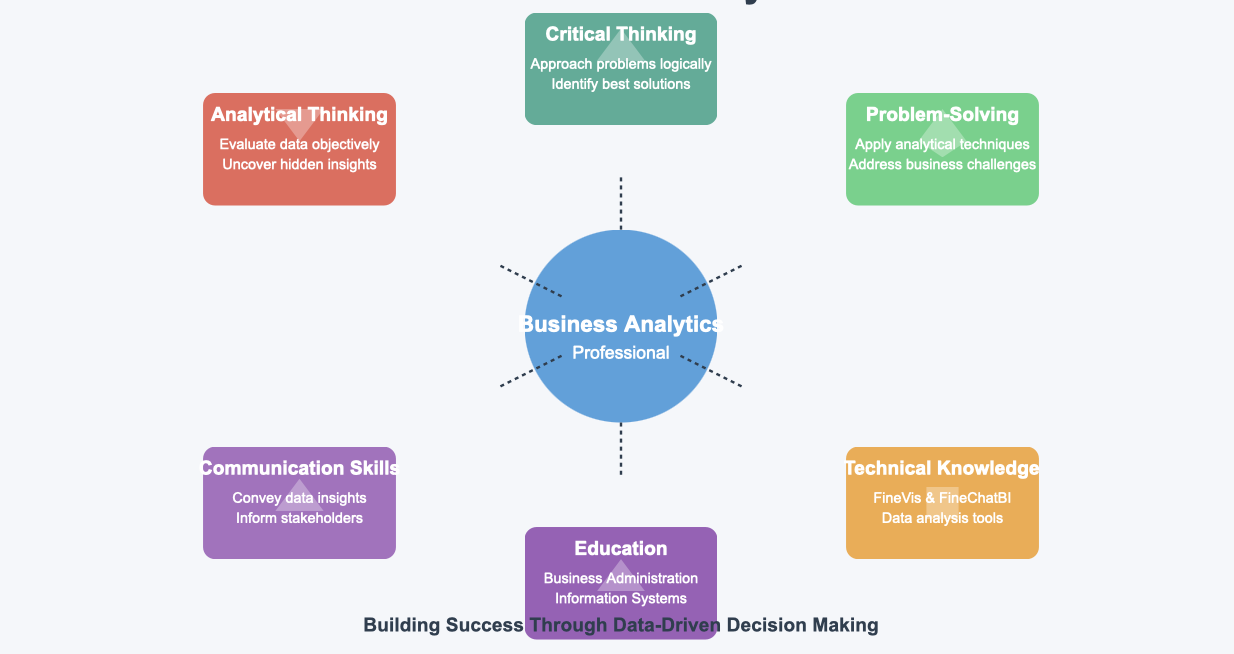
Your ability to combine these skills ensures that you can navigate complex business environments and deliver impactful results.
Tip: Strengthen your problem-solving and communication skills to stand out as a business analyst. These abilities are crucial for addressing challenges and driving success.
Common Tools Used, including FineVis and FineChatBI
As a business analyst, you rely on various tools to analyze, interpret, and present data effectively. These tools simplify complex processes, enhance productivity, and help you deliver actionable insights. Among the most powerful tools available are FineVis and FineChatBI, which cater to your specific needs in data visualization and conversational business intelligence.
FineVis: Transforming Data into Visual Stories
FineVis is a versatile platform designed to help you create compelling visualizations. Its drag-and-drop interface allows you to build dashboards without any coding knowledge. You can choose from over 60 chart types, including advanced options like 3D visualizations and interactive maps. These features enable you to present data in a way that is both engaging and easy to understand.
You can try it out in the FineVis demo model below:
One of FineVis’s standout features is its real-time analytics capability. This ensures that you always work with the most up-to-date data. Whether you need to track key performance indicators or analyze trends, FineVis provides the tools to do so efficiently. Its adaptive design also allows you to access dashboards on any device, making it a flexible solution for your data needs.
FineChatBI: Conversational Insights at Your Fingertips
FineChatBI takes a unique approach to business intelligence by combining advanced dialogue engines with robust data analysis capabilities. This tool allows you to interact with your data using natural language queries. For example, you can ask, “What were last quarter’s sales figures?” and receive an instant, accurate response.
FineChatBI’s Text2DSL technology ensures that your queries are interpreted correctly. This feature enhances trust and transparency in the analysis process. Additionally, the tool supports multi-turn Q&A, enabling you to dive deeper into your data during a single conversation. By using FineChatBI, you can streamline your workflow and make data-driven decisions more quickly.
Why These Tools Matter
FineVis and FineChatBI address critical challenges you face as a business analyst. FineVis helps you transform raw data into visual stories that stakeholders can easily grasp. FineChatBI, on the other hand, simplifies the process of querying and analyzing data, making it accessible even to non-technical users. Together, these tools empower you to harness the full potential of your data.
Tip: Mastering tools like FineVis and FineChatBI can significantly enhance your efficiency and effectiveness as a business analyst. They allow you to focus on delivering value rather than getting bogged down by technical complexities.
By integrating these tools into your workflow, you can elevate your role and contribute more meaningfully to your organization’s success.
Business Data Analyst vs Business Analyst: Key Differences
Responsibilities
The responsibilities of a business data analyst and a business analyst differ significantly, reflecting their unique roles in an organization. As a data analyst, your primary focus lies in working with data to uncover actionable insights. You collect, clean, and process data from various sources, ensuring its accuracy and reliability. Using tools like SQL, Python, or R, you analyze relationships within datasets and create visualizations through platforms such as Tableau or FineBI. Your work supports decision-making by providing clear, data-driven insights that help organizations identify opportunities and mitigate risks.
In contrast, a business analyst emphasizes improving processes and aligning them with organizational goals. You gather requirements from stakeholders, analyze existing workflows, and propose solutions to enhance efficiency. Your role often involves creating business cases, designing solutions, and managing change within the organization. By collaborating with technical teams and stakeholders, you ensure that proposed systems meet business needs and deliver long-term value.
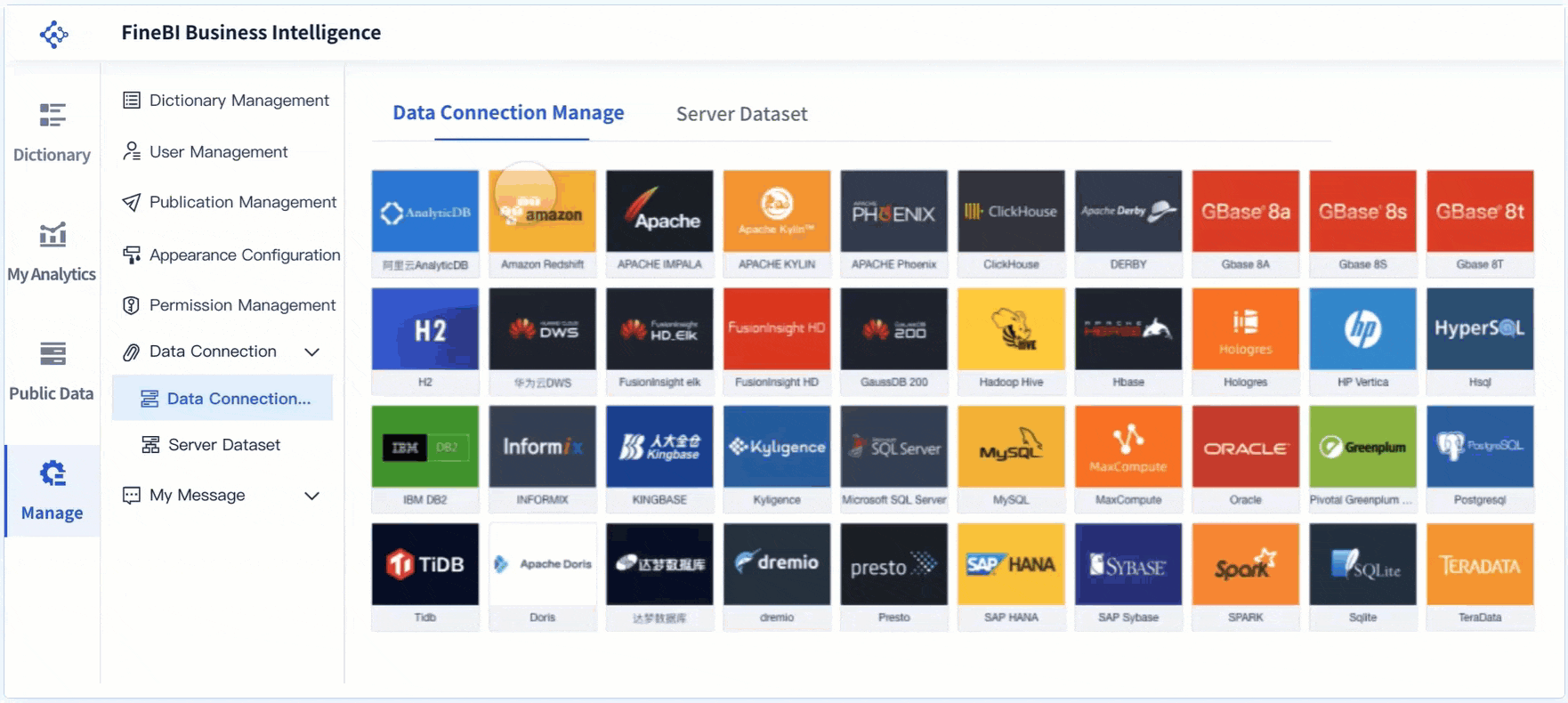
The table below highlights the key differences in responsibilities:
| Role | Responsibilities |
|---|---|
| Data Analyst | - Data Collection and Cleaning: Work with data from various sources, clean and verify accuracy. |
| - Data Processing: Use methods and scripting languages like SQL, Python, R for data handling. | |
| - Statistical Analysis: Analyze relationships in data sets using quantitative methods. | |
| - Data Visualization: Create charts and dashboards using tools like Tableau, Power BI, or Excel. | |
| - Reporting: Prepare reports with data analysis and recommendations for decision-makers. | |
| - Decision Support: Provide information to aid in decision-making and identify opportunities. | |
| Business Analyst | - Requirement Gathering: Interact with users to establish project goals and specifications. |
| - Process Analysis: Assess current business processes and suggest improvements. | |
| - Solution Design: Develop systems that meet organizational needs in collaboration with technical teams. | |
| - Business Case Development: Create business cases outlining advantages and implications of changes. | |
| - Stakeholder Communication: Mediate between business stakeholders and technical specialists. | |
| - Project Management Support: Help establish project scope and monitor progress. | |
| - Change Management: Coordinate the adoption of new systems and processes within the organization. |
Skills and Qualifications
The skills and qualifications required for these roles reflect their distinct focuses. As a business data analyst, you need strong technical expertise in data analysis and visualization. Proficiency in SQL, Python, or R is essential for handling data, while tools like FineBI or Tableau help you present insights effectively. A background in statistics, mathematics, or computer science provides the foundation for your role. Certifications like the Certified Analytics Professional (CAP) can further enhance your credentials.

On the other hand, a business analyst requires a blend of analytical and interpersonal skills. You must excel in stakeholder communication, problem-solving, and process analysis. Familiarity with tools like Microsoft Visio or FineChatBI helps you design and present solutions. A degree in business administration or management is often preferred, along with certifications such as CBAP (Certified Business Analysis Professional) or PMI-PBA (Professional in Business Analysis).
The table below summarizes the key differences in skills and qualifications:
| Aspect | Business Analyst | Data Analyst |
|---|---|---|
| Primary Concerns | Relationship between technological solutions and organizational initiatives. | Analyzing data to reveal new knowledge for decision-making. |
| Skills | Analytical skills, business acumen, problem-solving, communication, stakeholder management. | Data analysis and summarization, data transformations, and data representation techniques. |
| Requirements | Degree in business administration or management; CBAP or PMI-PBA certifications. | Degree in statistics, mathematics, computer science; CAP certification. |
| Tools | Microsoft Visio, JIRA, Trello, Jama, Tableau, Excel | SQL, Python, R, Tableau, Power BI |
| Industry Applications | Finance, banking, healthcare, IT, marketing. | Finance, healthcare, e-commerce, advertising. |
Tools and Technologies
The tools you use as a business data analyst or business analyst play a crucial role in your effectiveness. As a data analyst, you rely on platforms like FineDataLink and FineBI to manage and visualize data. FineDataLink simplifies data integration, enabling you to synchronize and prepare datasets for analysis. FineBI empowers you to create dashboards and visualizations, making it easier to communicate insights to stakeholders. Other tools like Python, R, and SQL are essential for processing and analyzing data.
As a business analyst, your focus shifts to tools that facilitate process improvement and collaboration. FineVis helps you create visual stories that illustrate complex processes, while FineChatBI enables conversational insights through natural language queries. Tools like Microsoft Visio and JIRA support project management and solution design, ensuring that your recommendations align with organizational goals.
By mastering these tools, you can unlock your full potential and contribute more effectively to your organization’s success.
Industry Applications with FanRuan-en Solutions
FanRuan’s solutions empower you to address challenges across diverse industries. Whether you work in manufacturing, retail, healthcare, or finance, these tools help you optimize processes and make data-driven decisions. Let’s explore how these solutions apply to key sectors.
1. Manufacturing
In manufacturing, you can use FineDataLink to integrate data from production lines, supply chains, and inventory systems. This ensures real-time synchronization and accurate reporting. FineBI enables you to analyze production efficiency, identify bottlenecks, and forecast demand. FineVis helps you visualize complex workflows, making it easier to streamline operations and reduce downtime.

Example: A manufacturing company used FineBI to monitor production metrics. This led to a 15% improvement in efficiency by identifying and addressing delays in the supply chain.
2. Retail
Retailers rely on data to enhance customer experiences and optimize inventory. FineDataLink allows you to consolidate sales data from multiple stores or e-commerce platforms. FineBI provides insights into customer behavior, helping you tailor promotions and improve product placement. FineVis creates dynamic dashboards that track sales trends and inventory levels in real time.
Tip: Use FineBI to analyze seasonal sales patterns. This helps you stock the right products at the right time, reducing overstock and shortages.
3. Healthcare
In healthcare, accurate data management is critical. FineDataLink integrates patient records, operational data, and financial systems. FineBI enables you to analyze patient outcomes, resource utilization, and operational costs. FineChatBI simplifies data queries, allowing you to access insights quickly without technical expertise.
Example: A hospital used FineChatBI to analyze patient admission trends. This helped allocate resources more effectively, reducing wait times by 20%.
4. Finance
Financial institutions handle vast amounts of data daily. FineDataLink ensures seamless integration of transactional data, while FineBI provides tools for risk analysis and fraud detection. FineVis helps you create visual reports for stakeholders, making complex financial data easier to understand.
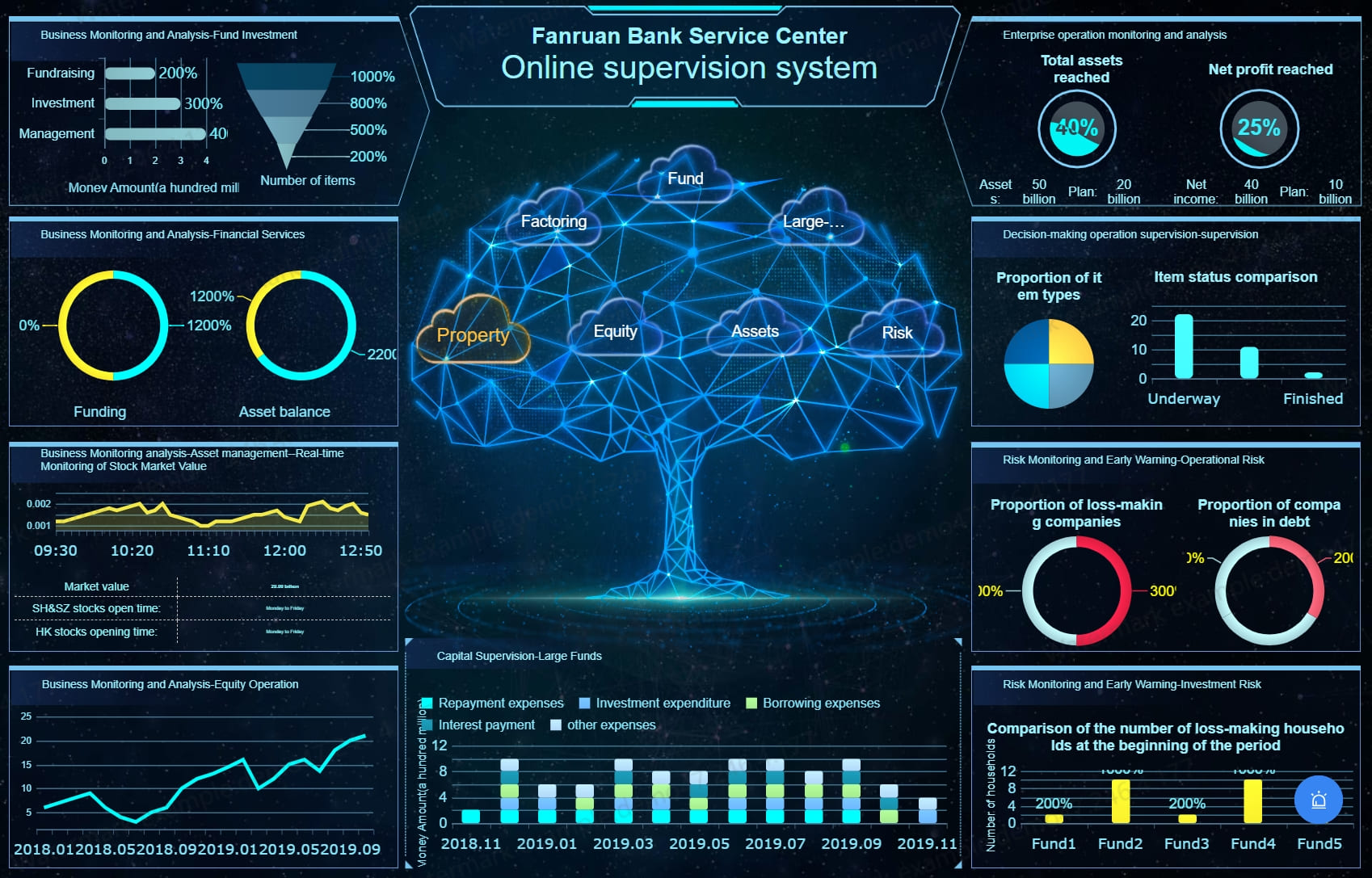
Note: FineBI’s real-time analytics can help you monitor market trends and make timely investment decisions.
FanRuan-en’s solutions adapt to your industry’s unique needs. By leveraging these tools, you can enhance efficiency, improve decision-making, and drive growth.
Comparison Table
Here’s a quick comparison of the roles of a business data analyst and a business analyst to help you understand their differences:
| Aspect | Business Data Analyst | Business Analyst |
|---|---|---|
| Primary Focus | Extracting actionable insights from data. | Improving processes and aligning them with business goals. |
| Key Responsibilities | Data collection, cleaning, analysis, and visualization. | Requirement gathering, process analysis, and solution design. |
| Tools Used | FineDataLink, FineBI, Tableau, Python, R. | FineVis, FineChatBI, Microsoft Visio, JIRA. |
| Skills Required | Data analysis, statistical modeling, technical proficiency in SQL and programming. | Analytical thinking, stakeholder communication, and problem-solving. |
| Industry Applications | Finance, healthcare, e-commerce, advertising. | Finance, IT, marketing, healthcare, and consulting. |
Takeaway: Both roles are essential for organizational success. While a business data analyst focuses on data-driven insights, a business analyst ensures that processes align with strategic goals.
Career Insights for Business Data Analyst and Business Analyst
Typical Career Progression for a Business Data Analyst
Your career as a business data analyst often begins with entry-level roles where you focus on collecting and analyzing data. In these positions, you gain hands-on experience with tools like SQL, Python, and FineBI. As you develop your technical skills and analytical eBIxpertise, you can move into mid-level roles. These positions involve more complex data modeling, predictive analysis, and collaboration with stakeholders to drive strategic decisions.
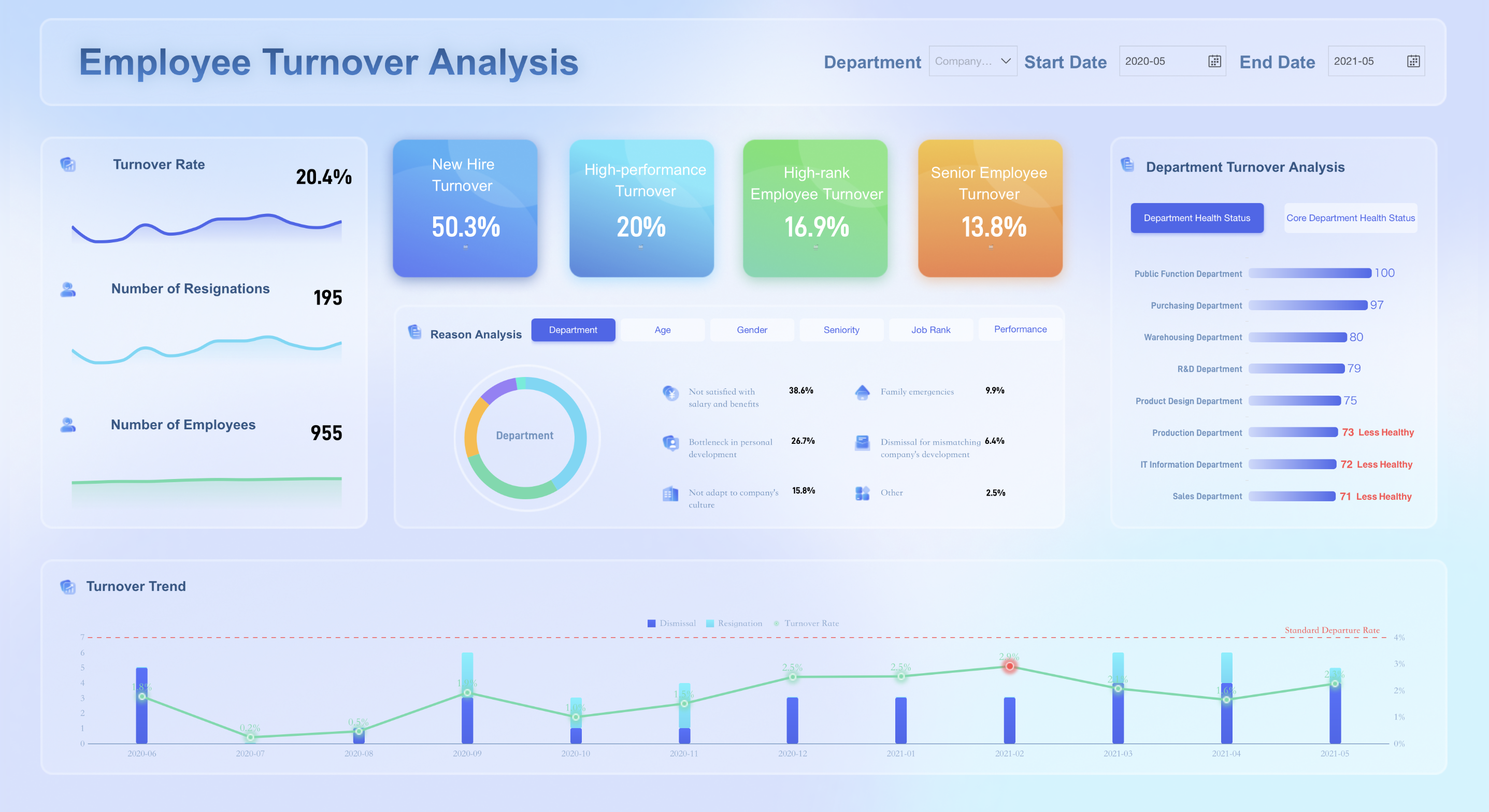
With continued growth, you may advance to senior-level roles. At this stage, you lead data-driven projects, mentor junior analysts, and contribute to organizational strategies. Many senior analysts transition into specialized roles such as data science or data engineering. Others take on leadership positions, managing analytics teams and shaping the company’s data strategy. The demand for skilled data professionals ensures that your career path offers numerous opportunities in high-demand fields like finance, healthcare, and technology.
Typical Career Progression for a Business Analyst
As a business analyst, your career begins with roles focused on gathering requirements and analyzing processes. You work closely with stakeholders to identify challenges and propose solutions. Over time, you gain experience in process improvement, project management, and strategic planning. These skills prepare you for mid-level roles where you handle more significant projects and collaborate with cross-functional teams.
In senior positions, you take on strategic responsibilities. You may lead initiatives that align business goals with technological solutions. Many senior business analysts partner with executives to drive key objectives. Industries like finance, healthcare, and consulting offer pathways to managerial roles or consultancy positions. For example, in finance, you might oversee strategic planning initiatives, while in consulting, you could transition into advisory roles. The emphasis on data-driven decision-making across industries ensures that your career remains dynamic and rewarding.
| Industry/Sector | Career Advancement Opportunities |
|---|---|
| Finance | High demand for analysts leading to managerial roles |
| Healthcare | Growth in data-driven decision-making roles |
| Technology | Increasing need for strategic business analysts |
| Retail | Opportunities in optimizing processes and profitability |
| Consulting | Pathways to consultancy roles and strategic positions |
| Manufacturing | Demand for process optimization and efficiency analysis |
| Telecommunications | Roles in data analysis and strategic planning |
| Education | Growth in analytics roles for institutional improvement |
| Government | Increasing need for data-driven policy-making |
| Non-Profit | Opportunities in program evaluation and impact analysis |
Tip: To advance your career as a business analyst, focus on developing strong communication and problem-solving skills. These abilities are essential for leadership roles.
Salary Ranges and Factors Influencing Pay
Your earning potential as a business data analyst or business analyst depends on factors like experience, location, and industry. Entry-level data analysts typically earn between $60,000 and $75,000 annually. Mid-level roles offer salaries ranging from $75,000 to $90,000, while senior positions can pay up to $115,000. Business analysts often start with salaries between $65,000 and $80,000. Mid-level analysts earn $80,000 to $100,000, and senior roles can reach $130,000.
| Role | Entry-Level Salary | Mid-Level Salary | Senior-Level Salary | Factors Affecting Salary |
|---|---|---|---|---|
| Data Analyst | $60,000 - $75,000 | $75,000 - $90,000 | $90,000 - $115,000 | Experience, Location, Industry |
| Business Analyst | $65,000 - $80,000 | $80,000 - $100,000 | $100,000 - $130,000 | Experience, Location, Industry |
According to Indeed, the average total pay for a data analyst is approximately $76,657 per year, including a $2,000 cash bonus. Business analysts earn an average base pay of $84,519 annually, with performance incentives and a $3,500 cash bonus. These figures highlight the competitive compensation in these high-demand fields.
Note: To maximize your earning potential, focus on gaining experience, pursuing certifications, and staying updated with industry trends.
Job Market Demand and Growth Opportunities
The job market for business data analysts and business analysts is expanding rapidly. Organizations across industries are increasingly relying on data to make informed decisions. This trend has created a strong demand for professionals who can analyze data and improve business processes. As a result, you can expect exciting career growth opportunities in these roles.
Employment statistics highlight the growing demand for these professions. The employment of management analysts, which includes business analysts, is projected to grow by 11% from 2023 to 2033. This rate is significantly faster than the average for all occupations. Each year, approximately 95,700 openings for management analysts are expected due to workforce transitions and retirements. Similarly, market research analysts, a role closely related to business data analysts, are projected to see an 8% growth in employment during the same period. These figures reflect the increasing reliance on analytics and data-driven strategies across industries.

The rise of machine learning and data science has further fueled this demand. Companies are urgently seeking analytics talent to leverage these innovations. As a business data analyst, you will play a key role in helping organizations harness the power of data. Your ability to uncover insights and predict trends will make you indispensable in fields like finance, healthcare, and retail. On the other hand, as a business analyst, you will focus on improving processes and aligning them with organizational goals. Your expertise will help businesses adapt to changing market conditions and remain competitive.
The demand for these roles spans multiple industries. In finance, you can analyze market trends and improve investment strategies. In healthcare, you can optimize patient care and resource allocation. Retailers need your skills to enhance customer experiences and manage inventory effectively. These diverse opportunities ensure that your career remains dynamic and rewarding.
If you are considering a career in these fields, now is the perfect time to start. The growing reliance on data and process optimization guarantees a steady demand for your skills. By staying updated with industry trends and mastering relevant tools, you can position yourself for long-term success.
Tip: Focus on building technical skills and gaining practical experience to stand out in this competitive job market. Certifications in tools like FineBI or FineChatBI can give you an edge.
Transitioning Two Roles Between Business Data Analyst and Business Analyst
Skills Overlap and Transferable Competencies
Transitioning between a business analyst and a business data analyst role becomes easier when you understand the overlapping skills and competencies. Both roles require a strong analytical mindset, problem-solving abilities, and a focus on data-driven solutions. You also need excellent communication skills to present findings and collaborate with stakeholders effectively.
The table below highlights the shared skills between these roles:
| Skill/Competency | Business Analyst | Business Data Analyst |
|---|---|---|
| Analytical Mindset | Yes | Yes |
| Data-Driven Solutions Focus | Yes | Yes |
| Research Abilities | Yes | Yes |
| Analytics Acumen | Yes | Yes |
| Technical Proficiencies | Yes | Yes |
| Problem-Solving Skills | Yes | Yes |
| Solution Design Capabilities | Yes | Yes |
| Communication Proficiency | Yes | Yes |

These shared competencies provide a solid foundation for transitioning between the two roles. For example, your ability to analyze data and solve problems can help you adapt to the technical demands of a data analyst role or the strategic focus of a business analyst position.
Steps to Transition from Business Analyst to Business Data Analyst
If you are a business analyst aiming to transition into a business data analyst role, follow these steps to build the necessary skills and experience:
- Conduct a self-assessment of your current skills to identify gaps in technical knowledge.
- Learn SQL and data visualization tools like FineBI or Tableau to enhance your data analysis capabilities.
- Get comfortable with programming languages such as Python or R for advanced data manipulation.
- Obtain certifications like Certified Analytics Professional (CAP) to validate your expertise.
- Create a detailed action plan with specific milestones to track your progress.
- Update your resume to reflect your new skills and highlight relevant projects.
By focusing on these steps, you can position yourself as a strong candidate for data analyst roles. For instance, mastering SQL and visualization tools allows you to handle data more effectively, while certifications demonstrate your commitment to professional growth.
Steps to Transition from Business Data Analyst to Business Analyst
Moving from a business data analyst role to a business analyst position involves shifting your focus from technical data analysis to strategic process improvement. Here’s how you can make this transition:
- Conduct a skill gap analysis to identify areas where you need improvement, such as stakeholder management or business process modeling.
- Acquire these skills through workshops, online courses, or mentorship programs.
- Obtain certifications like CBAP (Certified Business Analysis Professional) to enhance your credibility.
- Prepare an action plan with clear activities and timelines to guide your transition.
- Update your resume to emphasize your experience in data-driven decision-making and process optimization.
These steps help you align your technical expertise with the broader responsibilities of a business analyst. For example, developing strong communication skills enables you to interact effectively with stakeholders and propose actionable solutions.
Tip: Whether transitioning to or from a business data analyst role, focus on building transferable skills like problem-solving and communication. These competencies are valuable in both pathways and ensure a smoother career shift.
Certifications and Training to Facilitate Transition, including FineBI and FineDataLink
Certifications and training programs play a vital role in helping you transition between roles like business data analyst and business analyst. They validate your skills, enhance your knowledge, and make you stand out in a competitive job market. Whether you aim to strengthen your technical expertise or improve your process analysis abilities, certifications provide a structured path to achieve your goals.
Key Certifications for Business Data Analysts
If you want to transition into a business data analyst role, certifications focused on data analysis and visualization are essential. Programs like the Certified Analytics Professional (CAP) or Microsoft Certified: Data Analyst Associate equip you with the skills to handle data effectively. These certifications teach you how to analyze datasets, create visualizations, and generate actionable insights. They also demonstrate your proficiency with tools like SQL, Python, and FineBI.
FineBI training is particularly valuable for mastering self-service analytics and data visualization. This tool simplifies the process of creating dashboards and analyzing trends, making it easier for you to present insights to stakeholders. By completing FineBI training, you can enhance your ability to transform raw data into meaningful visual stories.
Certifications for Business Analysts
For those transitioning into a business analyst role, certifications like the Certified Business Analysis Professional (CBAP) or PMI Professional in Business Analysis (PMI-PBA) are highly recommended. These programs focus on process improvement, stakeholder communication, and requirement gathering. They prepare you to align business goals with technological solutions effectively.
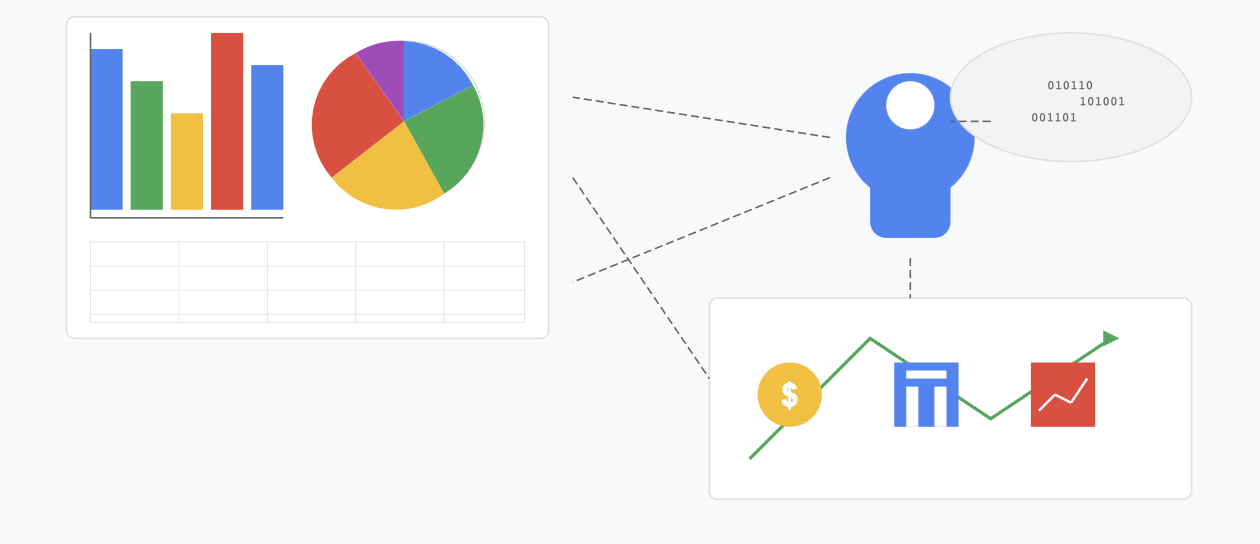
FineDataLink training is an excellent addition to your skillset. This tool helps you integrate and manage data from multiple sources, ensuring accuracy and consistency. By mastering FineDataLink, you can streamline workflows and improve data quality, which are critical aspects of a business analyst’s responsibilities.
Benefits of Certifications and Training
Certifications not only validate your expertise but also boost your confidence in using advanced tools. They provide hands-on experience, allowing you to apply your knowledge in real-world scenarios. For example, FineBI and FineDataLink training programs include practical exercises that help you understand their functionalities deeply. These tools are essential for both business data analysts and business analysts, as they simplify complex tasks and enhance productivity.
Tip: Choose certifications that align with your career goals. For instance, if you want to focus on data-driven insights, prioritize programs that teach data analysis and visualization.
By investing in certifications and training, you can bridge skill gaps and position yourself for success in your desired role. These programs not only enhance your technical abilities but also demonstrate your commitment to professional growth.
Understanding the differences between a business data analyst and a business analyst helps you make informed career decisions. A business data analyst focuses on extracting insights from data, while a business analyst emphasizes improving processes and aligning them with business goals. Data analysts often earn higher salaries, with entry-level roles starting at $60,000, and senior positions reaching up to $115,000. Business analysts, however, experience faster job growth due to their strategic role in organizations.
Choosing the right path depends on your interests and skills. If you enjoy working with data and uncovering trends, a business data analyst role may suit you. If you prefer solving business challenges and collaborating with stakeholders, consider becoming a business analyst. Exploring both roles can help you find the best fit for your career aspirations.
Tip: Align your career choice with your strengths and passions to maximize your potential and satisfaction.
Click the banner below to try FineBI for free and empower your enterprise to transform data into productivity!
Continue Reading About Data Analysis
How to Fix Data Analysis Excel Not Showing in 2025
What is SaaS Analytics and Why Businesses Need It
Top Beginner-Friendly Data Analysis Projects to Build Your Portfolio
Data Analysis vs Data Analytics: What’s the Real Difference?
FAQ

The Author
Lewis
Senior Data Analyst at FanRuan
Related Articles

10 Best Retail Analytics Software Platforms for Retailers
Compare the 10 best retail analytics software platforms for retailers to boost sales, optimize inventory, and gain actionable customer insights.
Lewis
Dec 16, 2025
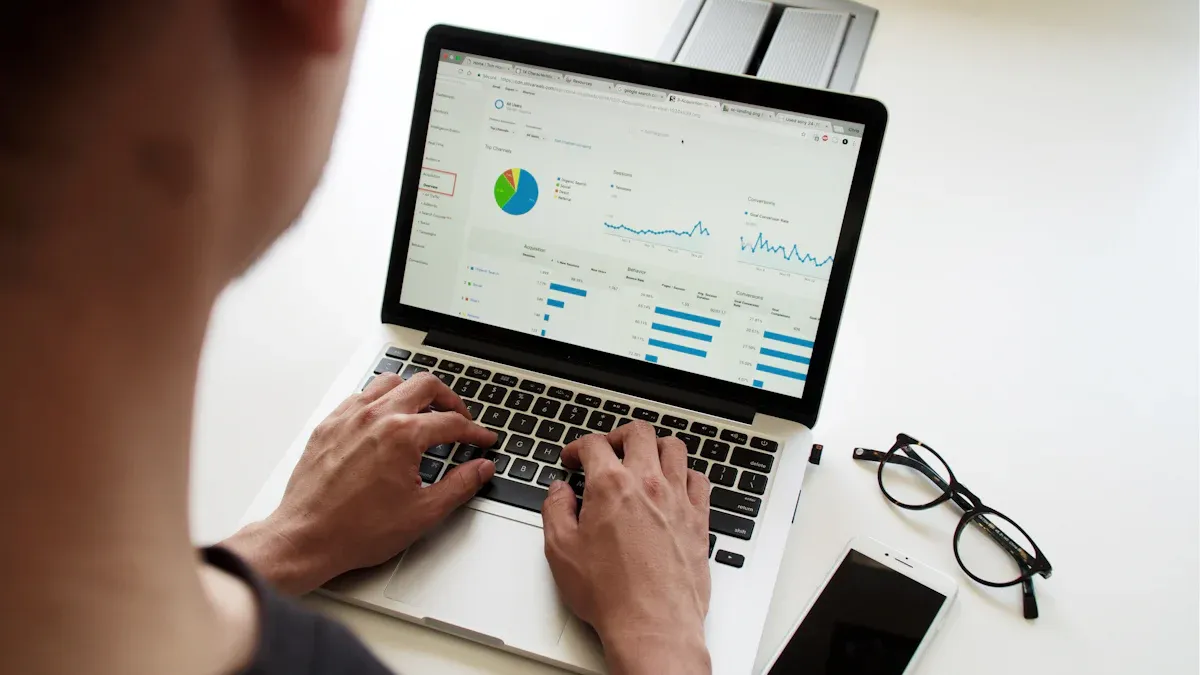
11 Best Tools for Research Analysis for Academics
Compare the 11 best tools for research analysis to boost academic and professional research efficiency, data management, and collaboration.
Lewis
Dec 11, 2025

10 Best Market Research Data Analysis Tools to Try This Year
See the top 10 market research data analysis tools to boost insights, streamline workflows, and make smarter business decisions this year.
Lewis
Dec 11, 2025
